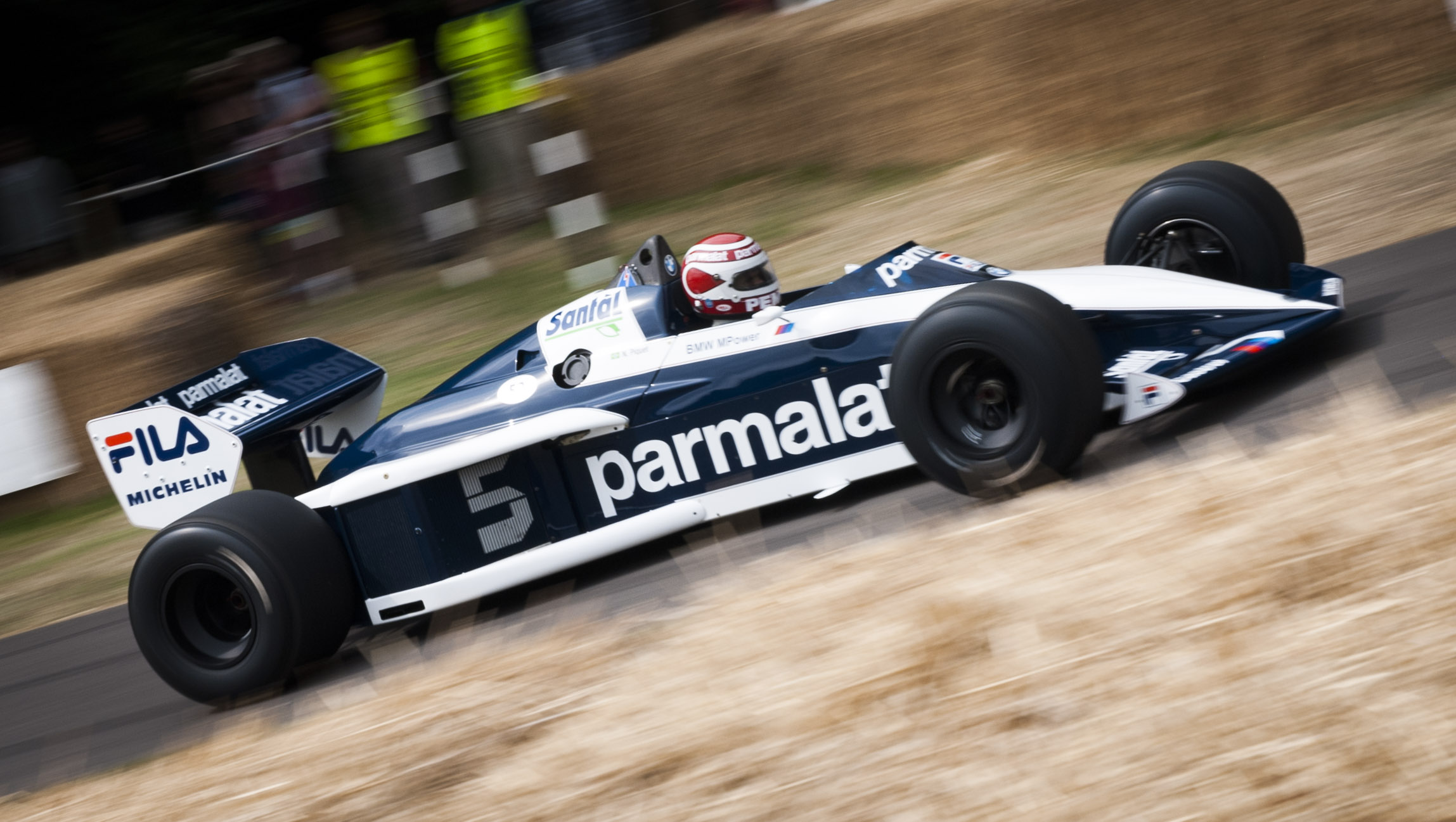1983 Brabham BT52

The descriptions of the Classic Cars in the Directory were partly generated or supplemented with the help of artificial intelligence (AI). The content may occasionally not always be entirely accurate or factually correct despite careful checking.
The Brabham BT52 was a revolutionary Formula One racing car designed by Gordon Murray, a South African engineer, for the Brabham team in 1983. The car was powered by a highly advanced BMW M12/13 turbocharged engine and proved to be extremely successful, winning both the drivers' and constructors' championships in the same year.
The BT52's chassis was made of lightweight carbon fiber and was designed with aerodynamic efficiency in mind. The car featured a highly streamlined bodywork with an aggressive front wing, a low-slung nose and a large rear wing, which generated enormous downforce at high speeds. The aluminum honeycomb monocoque was also incredibly strong, which added to the car's overall durability on the track.
The heart of the BT52 was its BMW M12/13 engine, which was a 1.5-litre four-cylinder unit with a single turbocharger. The engine was capable of producing around 850 horsepower in qualifying specification, which allowed the car to achieve blistering speeds on the track. The engine was mated to a six-speed manual gearbox, which featured an advanced clutch system that allowed for smooth and precise gear shifting, even under heavy load.
The suspension of the BT52 was also highly advanced, featuring double wishbone suspension with inboard coil springs and dampers. The front and rear suspension units were connected by anti-roll bars and torsion bars, which helped to keep the car stable during high-speed cornering.
Other technical features of the BT52 included a unique braking system that utilized carbon-carbon rotors and pads, which allowed for maximum stopping power while minimizing fade. The car also featured a highly advanced onboard telemetry system, which allowed the team to monitor the car's performance in real-time during races.
In summary, the Brabham BT52 was an incredibly advanced and successful racing car, which combined advanced aerodynamics, a powerful engine and highly advanced suspension and braking systems to achieve dominance on the track. Its technical innovations paved the way for future racing cars, and it remains one of the most iconic cars in the history of Formula One.
Milestones
- Launch of the Brabham BT52 in January 1983 - Debut of the car at the Brazilian Grand Prix on March 13, with Nelson Piquet driving - First win of the season for Piquet and the BT52 at the Long Beach Grand Prix on April 3 - Development and introduction of the "hydro-pneumatic" suspension system by chief designer Gordon Murray - Piquet secures pole position and a win at the Italian Grand Prix in September - Piquet clinches the 1983 Formula One World Championship after finishing third at the South African Grand Prix on October 15 - The BT52 earns a total of four pole positions, four race wins, and six podium finishes during the 1983 season.Technical
- Chassis construction: Aluminum monocoque structure - Engine: BMW M12/13, 1.5 L 4-cylinder, turbocharged - Power output: 850 hp (634 kW) at 11,000 rpm - Transmission: Hewland FGB 5-speed manual gearbox - Suspension: Double wishbone, pushrod-actuated coil springs over dampers, front and rear - Wheelbase: 2,641 mm (104 in) - Weight: 540 kg (1,190 lb) with driver, but without fuel - Fuel capacity: 220 liters (58 gal) - Brakes: Carbon fiber discs and pads, front and rear - Tires: Goodyear - Aerodynamics: Ground effect, flat underbody with side skirts, front and rear wings for downforce.